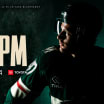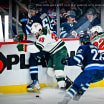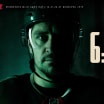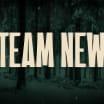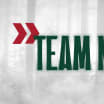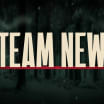ST. PAUL -- If the NHL Draft is the pride and joy of every amateur scout in the National Hockey League, then weeks like this one are the highlight for guys like Brad Bombardir and Matt Hendricks.
While the job of an amateur scout ends when a player they find is drafted into an organization, it's up to player development guys like Bombardir, the Wild Director of Player Development, and Hendricks, Bombardir's right-hand man, to shepherd those players from the amateur ranks to the NHL.
More simply: Bombardir and Hendricks serve as the bridge between the scouting staff of Judd Brackett and the staffs of Iowa Wild coach Tim Army and Minnesota Wild coach Dean Evason.
Wild's Bombardir, Hendricks help guide team's up-and-coming talent
Former Wild players shape team's prospects from draft day to their pro debuts
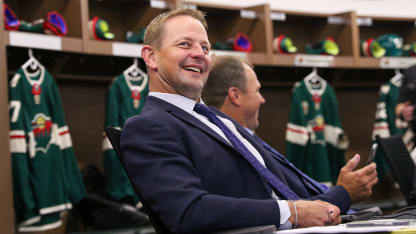
While players will skate for their junior or college teams in between, it's the job of Bombardir and Hendricks to make sure the path between those bookends is laid out as clearly as possible.
"Until they get into their mid-20s and really see their pro career take off," Hendricks said. "That's when they really gravitate towards the full-time coaches, whether it's in Iowa or if it's here.
So what does that work entail?
"It's trying to recognize the young guy when we do get control of them through the draft, recognize their strengths, recognize their areas of improvement and then start building relationships; with them, with their agent, with the coach or general manager of their current team," Hendricks said. "And really just try and be a sounding board for them as well."
And after a challenging past 18 months, where development staffs around the League has been forced to miss a host of in-person meetings, games and camps, the Wild's staff has finally been able to gather all of its prospects in St. Paul for a full week of practices and games against the Chicago Blackhawks in the first-ever Tom Kurvers Prospect Showcase at TRIA Rink.
After practices the past two days, the Wild and Blackhawks will play games on Friday (7 p.m.) and Sunday (1 p.m.) afternoon.
Bombardir and Hendricks have patiently waited for a week like this since the pandemic began, doing what they can to assist during the past two NHL Drafts but unable to really get their hands dirty when it comes to "normalcy" regarding their jobs of development.
That has changed this week, as they, along with a full complement of front office personnel as well as coaches in both Minnesota and Iowa, have been able to get more than two dozen of the Wild's prospects together for on-ice and off-ice workouts, instruction, team functions and more.
"It's so vital to the young guy's development for us to be a little more hands on with them and be able to sit down across the table and have face-to-face conversations," Bombardir said. "And to be able to go watch these guys this upcoming season, and to be able to go up to them after games and chat with them in person, to be able to give them a pat on the shoulder ... there is value in that one-on-one conversation as opposed to doing it on the phone or doing it over Zoom."
For Hendricks, who retired as an NHL player following the 2018-19 season and immediately joined the Wild front office as the Assistant Director of Player Personnel, it will offer him an opportunity to see what the realities of his job entail.
Hendricks' first draft class was the 2019 group, led by Matt Boldy, who has been property of the Wild for more than two years now.
But because of the pandemic, he's one of the few Wild prospects with whom he's been able to build an in-person relationship with.
The 2020 group, which was selected last October, completed last season largely without in-person scouting, and very limited viewing opportunities, and the 2021 group wasn't selected until just this past summer.
But even with that group, it wouldn't be uncommon for Hendricks or Bombardir to have at least seen those guys in person while viewing one of their own prospects.
That hasn't been the case the past 18 months, as that valuable time at the rink has instead been replaced by time in front of the laptop.
This week, they'll really get a chance to put names with faces with abilities, all while seeing Wild prospects do it in the Forest Green and Iron Range Red at TRIA Rink.
\\\\\\
When Bombardir was drafted in the third round of the 1990 NHL Draft by the New Jersey Devils, there was no such thing as a Director of Player Development.
A native of Powell River, B.C., Bombardir was set to embark on a college career at the University of North Dakota that fall. He'd spend the next four seasons at UND, including his senior season as captain, before beginning his professional career with the Albany River Rats in 1994.
During the four years between when he was drafted and when he finally debuted for the organization that had selected him, Bombardir said he rarely heard from the Devils.
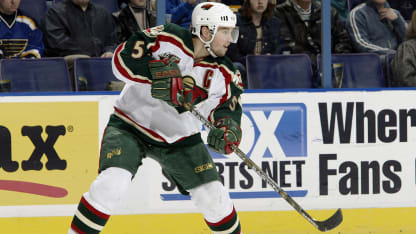
© Getty
"Back then, none of us really heard from our NHL teams," Bombardir said. "That's just the way it was back then, and it's so much different now. The communication, there's just so much more in focus than it ever was back then."
Bombardir would play six years with the Devils organization before coming to Minnesota and joining the Wild during its inaugural season in 2000. He'd spend 3 1/2 years with Minnesota before a half season in Nashville ahead of the 2004-05 lockout, which essentially ended his NHL career.
He'd play one game for the AHL's Springfield Falcons in 2005-06 before hanging up his skates.
In 2010, Bombardir was named the Wild's Director of Player Development, and at the time, it was a rather new position. Not every NHL club had one, but with the introduction of the salary cap a few years earlier, the value of developing young players really came into focus.
The upcoming campaign will be Bombardir's 11th in the role with Minnesota, and the veteran of 356 NHL games during his own playing career, is considered one of the top player development guys in the league.
"I think the role has evolved because the player has evolved," Bombardir said. "The player 15 years ago or 10 years ago is different than the player now, just in their mentality and the way they've grown up, their ability to just gain information. Everything is so instantaneous now and I think over the years ... I'm no doctor, but [the players'] brains have changed, just the way they respond to certain things."
Bombardir said it helps having kids who are around the same age as the guys in camp this week ... he has a 22-year-old son, as well as 19- and 17-year-old daughters who help keep him in tune with what kids that age are up against away from the rink.
"That to me has been the biggest change that I've seen in this job," Bombardir said. "We all do a lot of the same things. We'll all sit down and talk about their off-ice and on-ice habits, you try to build a pro mentality, how do we do that, and we all have our different ideas organizationally. Those things don't really differ too much, but I think the player themself, how you respond to them and how they respond to you, that has definitely evolved."
\\\\\\
While Bombardir hasn't played professionally in well over a decade, he has a partner in Hendricks who retired from the game just a few years ago, and has plenty of experience playing with the more modern NHL player.
During Hendricks' final couple of years as a player in the league, the Blaine native and former St. Cloud State Husky - and a veteran of 607 NHL games with six clubs - said he worked hard not to think about what his next steps might be.
When Hendricks signed as a free agent with the Wild ahead of the 2018-19 season, he had just turned 37 years old and it was clear the end was a whole lot closer than the beginning.
Still, he kept the thoughts of 'what's next' at bay long enough to enjoy every moment he'd have as a player.
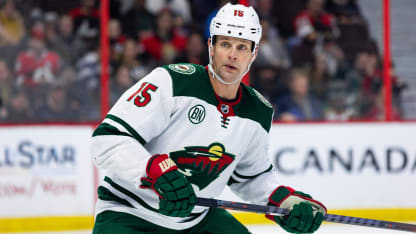
© Getty
"It was a goal of mine not to think about that," Hendricks said. "It's easy to sit back and think, 'what's next' and you start to get to that mindset, and then your career comes to an end quicker than it could."
Where there was plenty of crossover with his current gig was the kind of role he'd carve out for himself in his final years, as a strong veteran presence in locker rooms in Edmonton, Minnesota and Winnipeg. Over his final two seasons in the NHL, Hendricks would dress and skate in just 26 games, but he was still highly respected because of the kind of guy he was in the dressing room and as a teammate.
That wasn't by accident.
"As I got to the end of my career and the playing time started dwindling down, the opportunities for being on the game side of things started dwindling, I wanted to find a way to keep my role and keep my niche on an NHL team," Hendricks said. "And for me to do that, it was try and figure out a way to help the team succeed, to gravitate towards the young players and help them realize that if they have their best season, our team is going to have the best opportunity to win a championship.
"That became my mindset probably my last year in Edmonton, my full season in Winnipeg and my almost full season here in Minnesota; was 'How can I make these young guys feel comfortable so they can play their best hockey?'"
When he did retire as a player, only a few weeks went by before he was scooped up by the Wild. Hendricks knew he wanted to stay in the game, but with young kids of his own, and his family-first mantra, the idea of coaching either in the pros or at the college level, didn't appeal to him much.
So he decided to go this route, and lean on the experiences he gleaned late in his playing career, helping to cultivate young talent.
Bombardir couldn't be any happier to have him onboard.
"He's a natural for this position," Bombardir said. "The No. 1 thing you have to do is care, and he cares for every single one of our prospects and every one of our players. He buys into their development, is willing to do the work and support them in any way he can to help them get to where we both got to.
"He's a worker, he's diligent and he's focused on trying to do the right things for our players and to have our organization on the path so these guys help us win a Stanley Cup."
In the vast majority of cases, it's a years-long process that begins in the immediate aftermath of a player's draft year and lasts if and until he becomes a regular cog in an NHL lineup.
It's certainly not an easy journey, and there will often be more misses than hits, but there's a tremendous amount of pride taken when a player reaches his ultimate destination successfully.
For both Bombardir and Hendricks, seeing the pay off makes the years-long give-and-take, the development camps, the hours on the road and the countless conversations worth it.
"I think that makes anyone in this position proud, to see them come through every level, continue to get better and progress and just get a chance to live their dream like Hendy and I got to do," Bombardir said. "It's not easy for these guys and not a lot of guys end up as an every-day NHL player. But that is the greatest gift you can get from this job."
Main photo by Brandon McCauley


